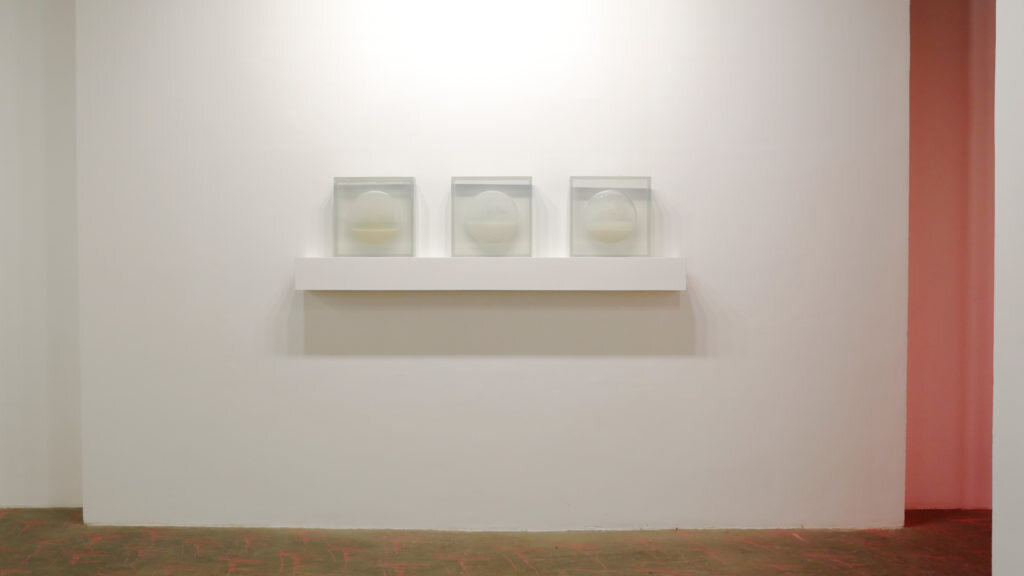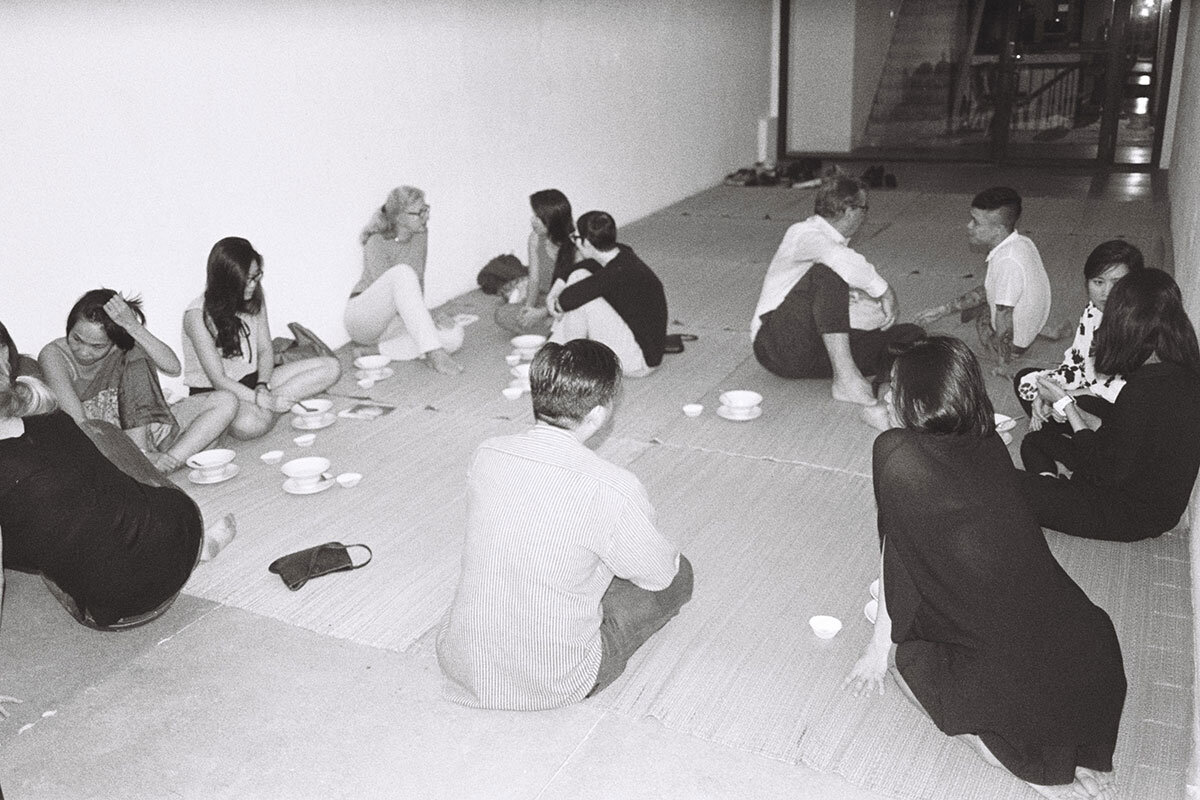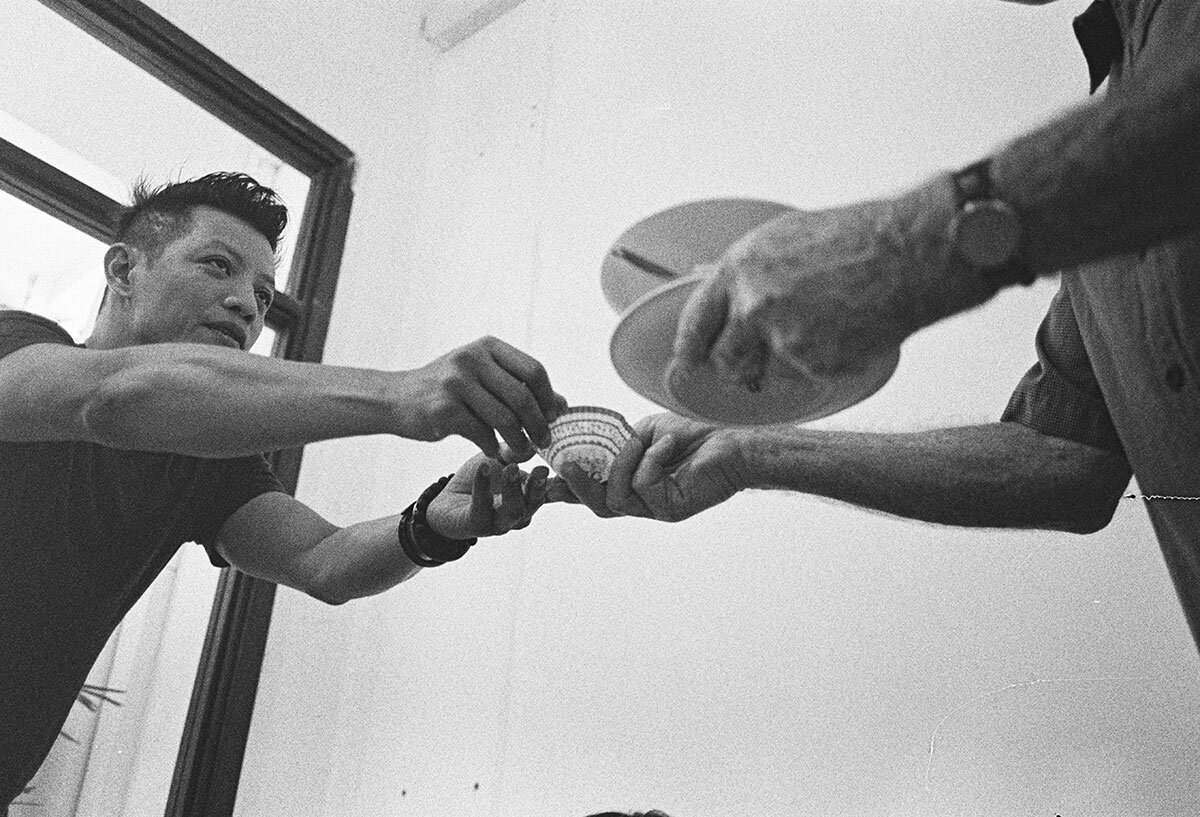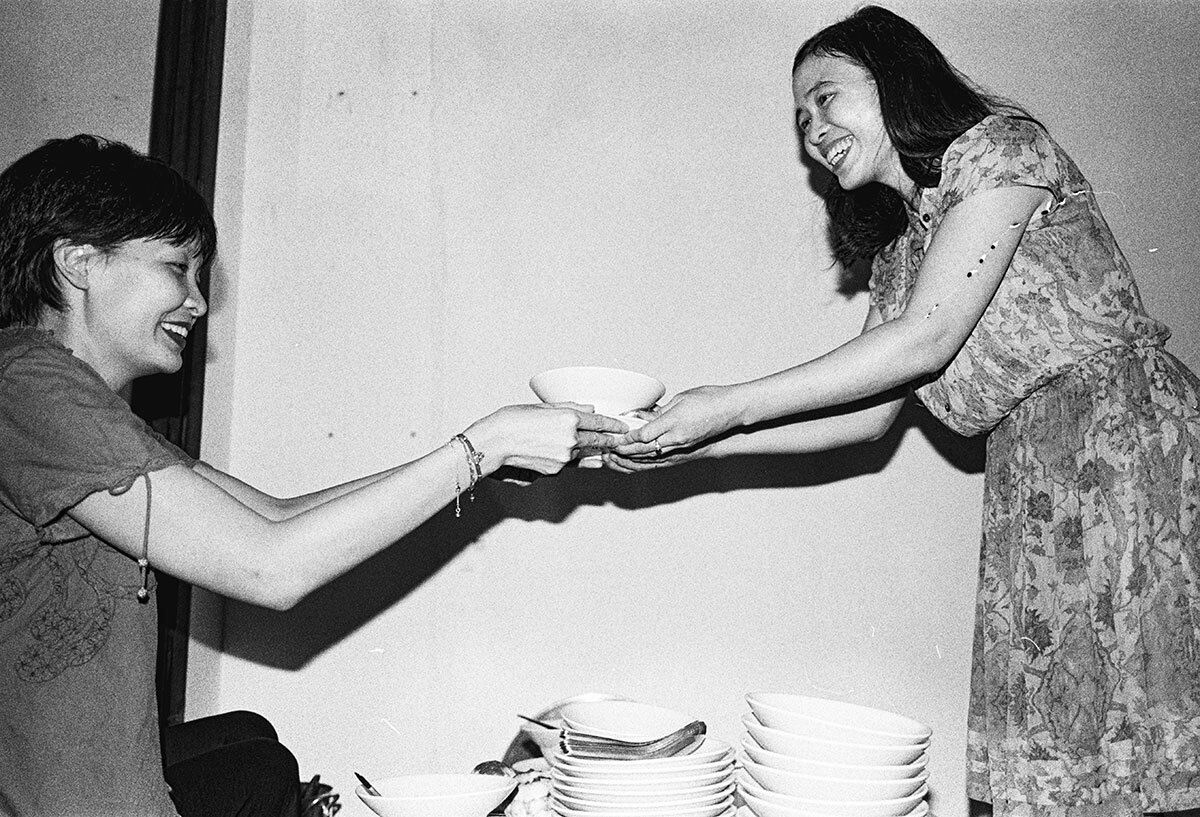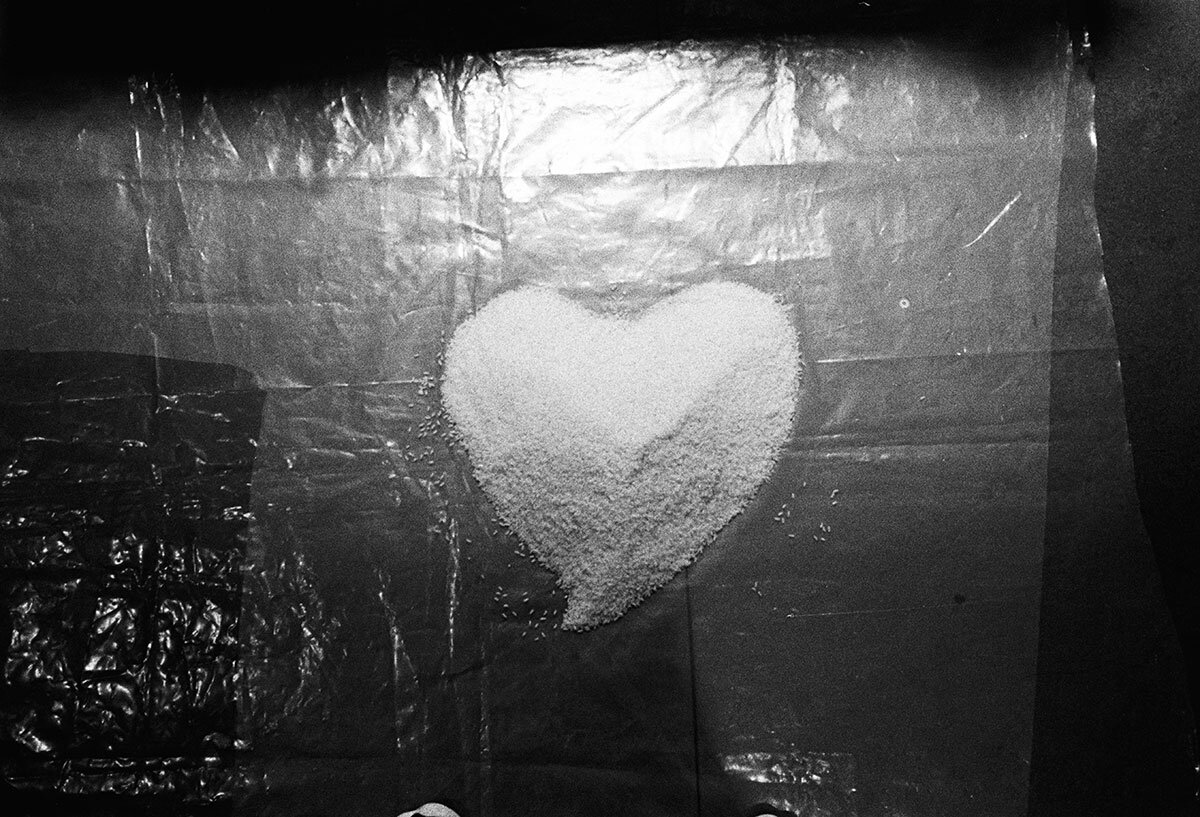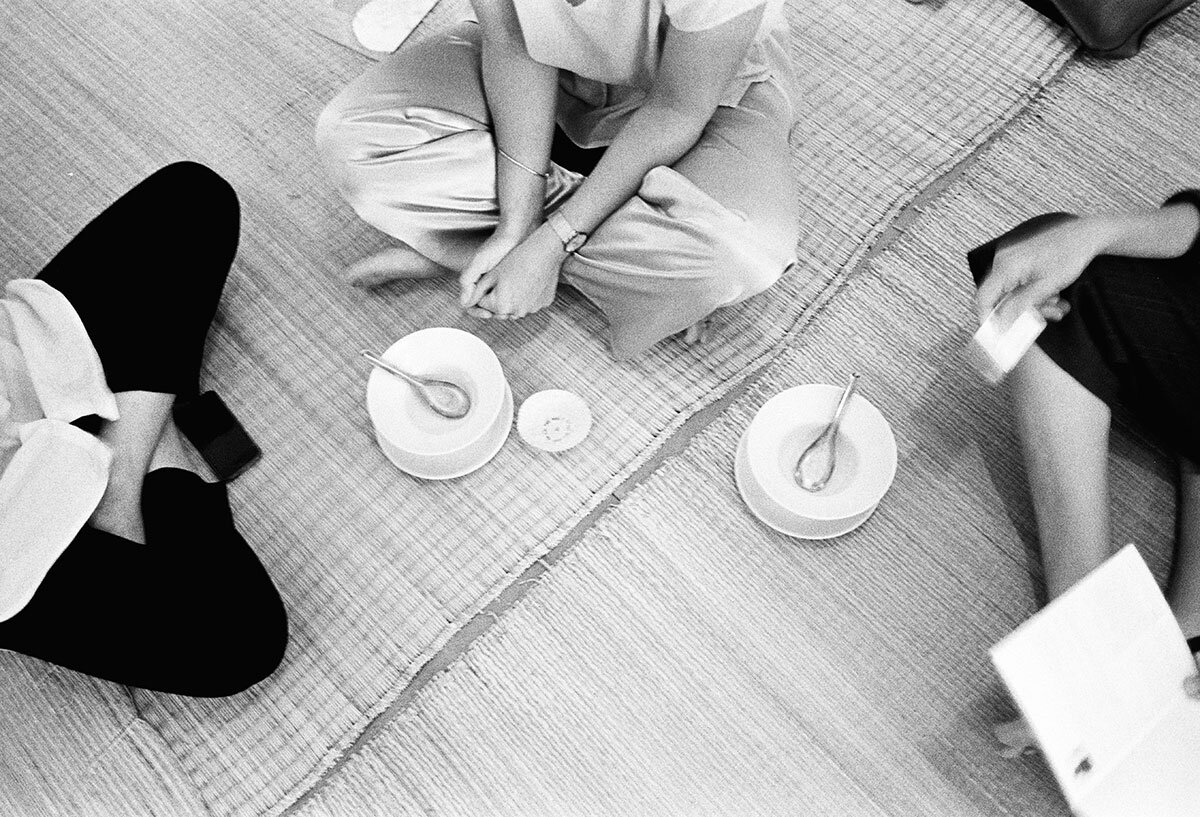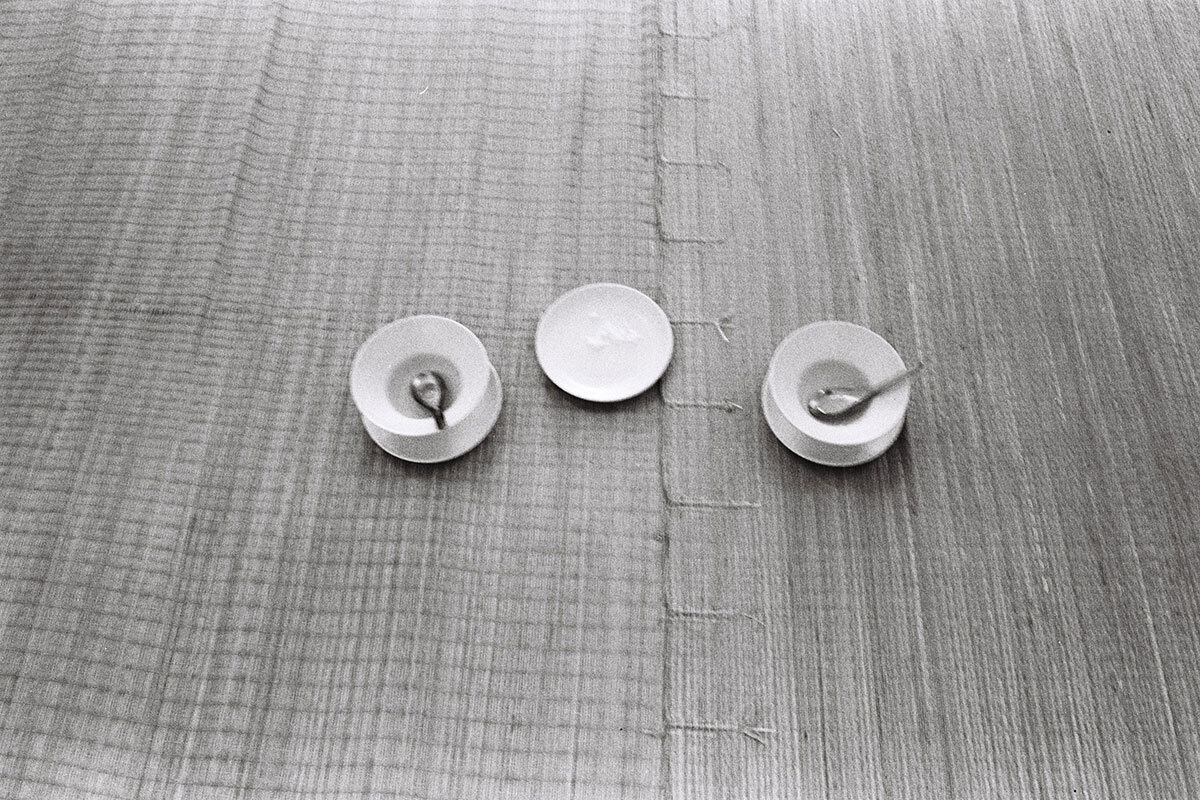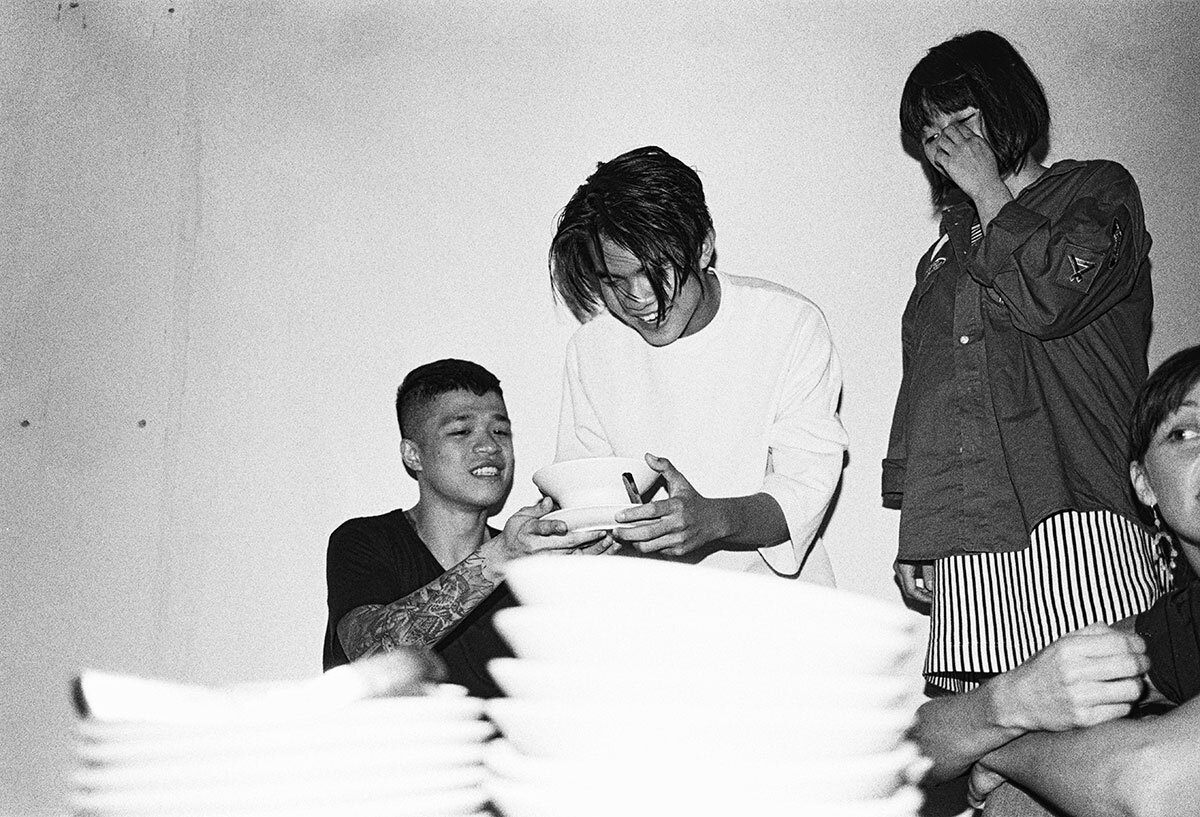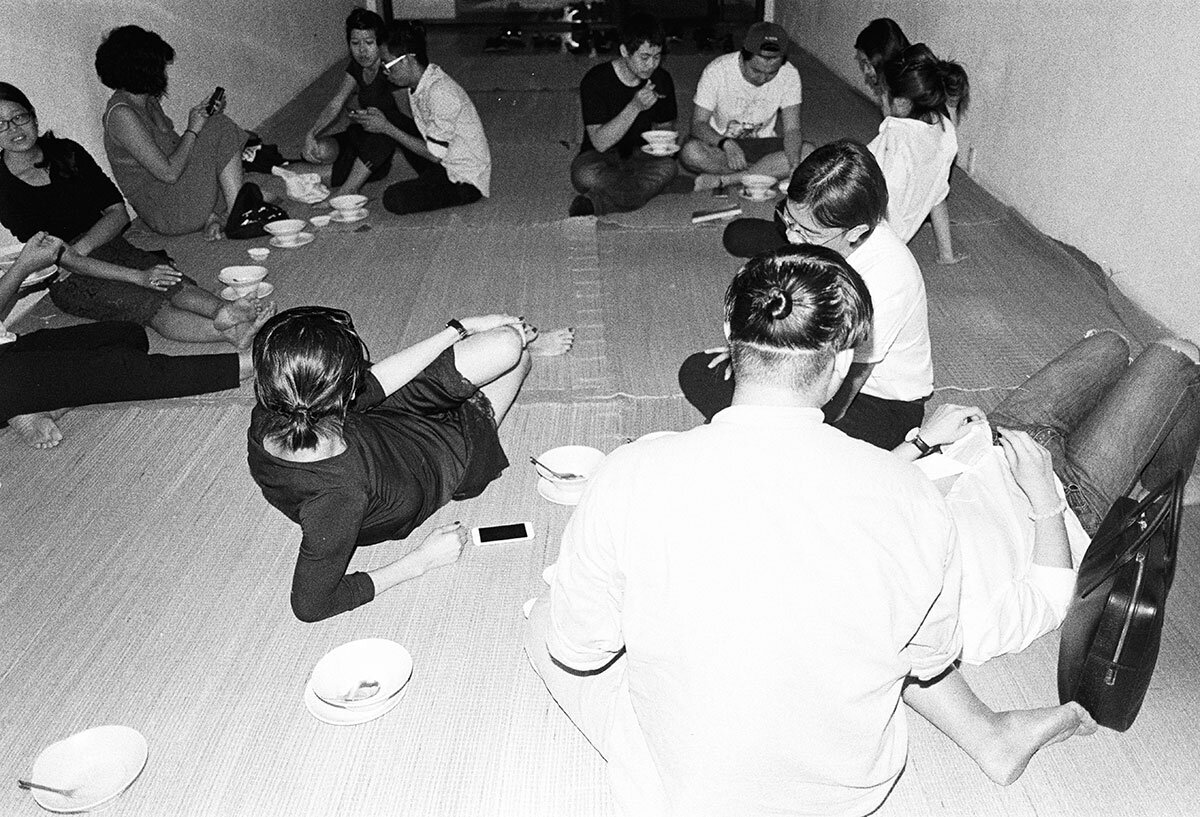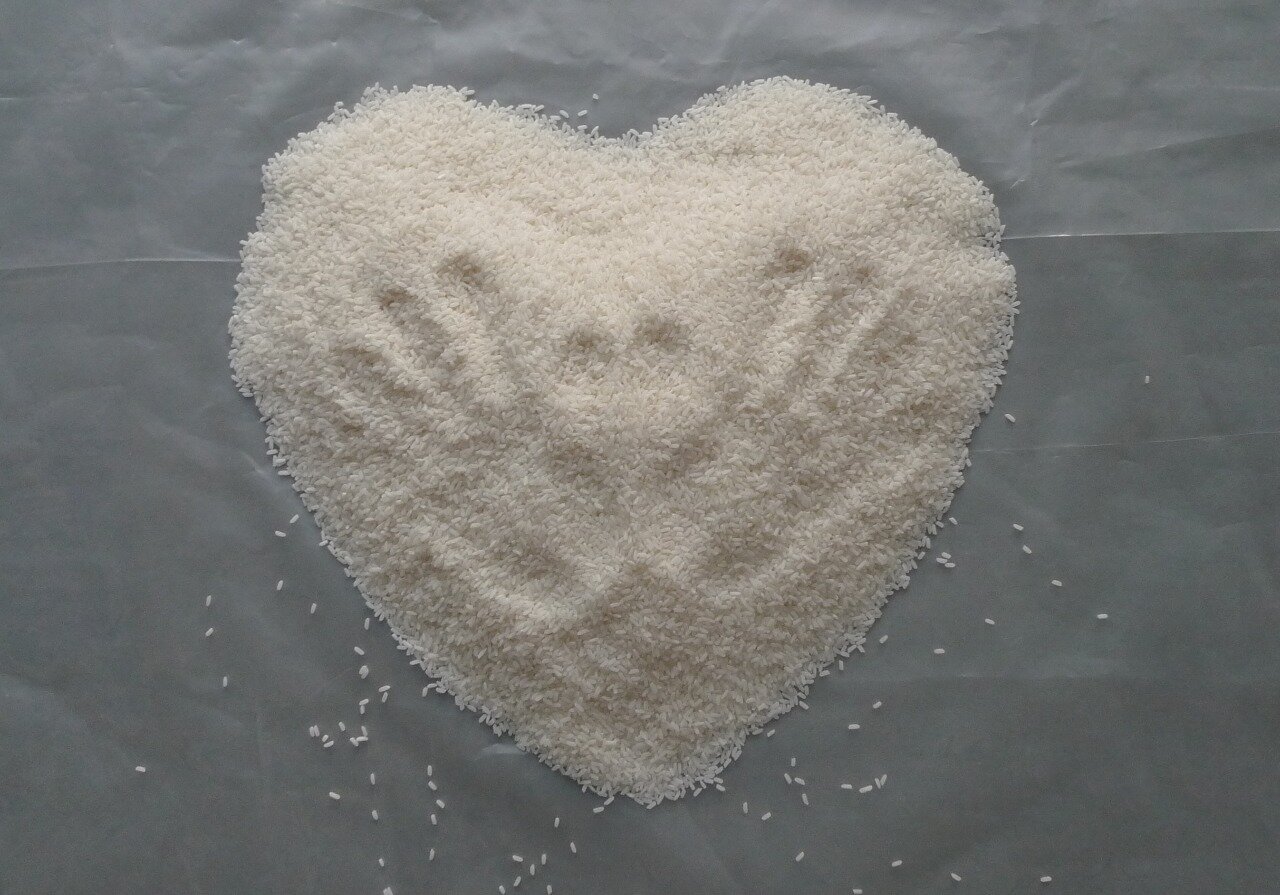Moon (Selene), Mars (Ares), Mercury (Hermes), Jupiter (Zeus), Venus (Aphrodite), Saturn (Cronus), Sun (Helios) [No specific order]
2015
ChaoArt, collective saliva, bacterias, minerals, in acrylic frame. 7 planets created from left-over of rice-soup, collected from bowls of clients and servers daily during one week performance ChaoArt|ArtChao session #1
ChaoArt Planets
“Energy can neither be created nor destroyed; rather, it transforms from one form to another” – law of conservation of energy
Ethereal yet repulsive, Cam Xanh’s seven planets, filled with the leftover cháo rice porridge from her ChaoArt performance, are evocative of the primordial soup from which we likely came. Housed in a square, clear acrylic glass box, each discus-shaped planet bulges from its centre. Although made from the same basic ingredients: cháo and saliva dregs scooped from participants’ finished bowls, the composition within the Plexiglas frame is in constant flux as the soup’s components slowly separate and are jostled each time the works are moved. As a result, each planet appears unique and autonomous of the others. Heavier rice grains sink to the bottom, leaving textured remnants lingering on the transparent curved walls; water used to liquidate the soup hovers at roughly the midpoint of each planet, cutting the circle in half; and air fills the top, breathing life into the bubble.
Whilst the basic simplicity of serving cháo soup may be questioning the notion of ‘fad diets’, club memberships and the way Vietnam’s nouveau riche choose to live their lives, it also provides a starting point and suggestion for a new way of living. In Cam Xanh’s metaphor for interstellar life, the happening of the ChaoArt performance becomes a supernova from which the seven planets have been ejected. A supernova, the explosion of a star, the largest explosion that can take place in space, is at once a death and a birth. In its collapse it bursts outwards, spilling itself into the universe, giving life to new stars and planets as it spreads its core contents. The formula for a supernova, like that of ChaoArt’s recipe, is always the same, yet despite this each result is different. Occurring in a specific space, at a single moment in time, both a supernova and ChaoArt are performances that create connections and ignite new possibilities.
For Cam Xanh these possibilities arise when people come together and engage with one another, and her ChaoArt gatherings establish the conditions for new ideas to arise. It is almost radical, in an age of digital hyperconnectivity, to suggest a coming together where people take the time to simply exist with one another, and join in the life-sustaining act of sharing food. ChaoArt’s resulting planets are a symbol of all we know and all don’t. They hold what we understand to be the key necessities for life: air, water, bacteria and light—the simple power of these elements already demonstrated in their ability to grow mould within and crack their Plexiglas frames. Yet the sculptures are named after the Greco-Roman god and planet of the day they were created: Moon (Selene) for Monday, Sun (Helios) for Sunday. The names respond to an unknowable historic and metaphysical past. Essentially though the planets feel soft, despite their hard shell, and nurturing. They speak to us about the fundamentals of life, and in doing so pose questions of how we choose to live it.
ChaoArt|ArtChao performance, session #1/detox
White rice porridge, or cháo, has a long history as a traditional food in Vietnam. It is often given to babies, the elderly and the sick when they are not strong enough to consume solid foods. Buddhist monks see cháo as a tranquil and serene dish to cleanse the body and mind. Cháo is the most basic food, but it is nurturing, connecting and healing. Vietnamese people also use cháo during the times when rice became scarce such as during the loss of a harvesting season, a flood, a famine, during war, or to overcome the lack of food in economic down periods. Instead of making steamed rice, five, ten, or even twenty times more water is added to increase the quantity of the mixture, and it is seasoned with salt to give it taste. This way the soup can be shared with and ensure the survival of more people during a difficult time. Images of a mother feeding cháo to her child; an adult feeding cháo to their aged parents, a nurse feeding cháo to her patient; a soldier feeding cháo to his wounded comrade; a caregiver feeding cháo to their unwell beloved; a poor person sharing cháo with those poorer than themselves; these have become a reoccurring motif in Vietnamese novel, drama, theatre and movie. They present cháo as symbol of loving, caring and sharing. Vietnam is still a developing country but the times of rice-shortages are long over. We now have luxury hotels, international restaurants, expensive cars and high-end fashion goods. High society living with exclusive memberships for sophisticated clubs is no more just images from a fancy movie, but is spoken of in every corner of big cities across the country, as well as on many national and international media outlets and social media websites. However, the art scene in Vietnam is somehow still very much malnourished. With modest personal means I have been supporting Vietnamese contemporary art for over a decade. Encouraging passion for art has became an urge. Using cháo as the symbol of sharing and charity, this happening/performance/social engagement initiates the idea of selling memberships to the most ordinary food ‘club’ to support artists and to nourish the art scene. ChaoArt challenges an almost impossible goal to connect people from different professions with different interests, and to share the passion and love from artists, collectors, curators, writers and all those that work in the art world. So let us walk our collective consciousness through this journey, with the very symbolic food of caring-sharing-healing, and together we will grow the purest beauty of art itself…


